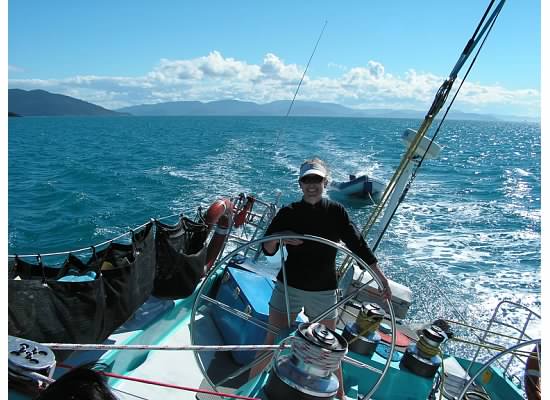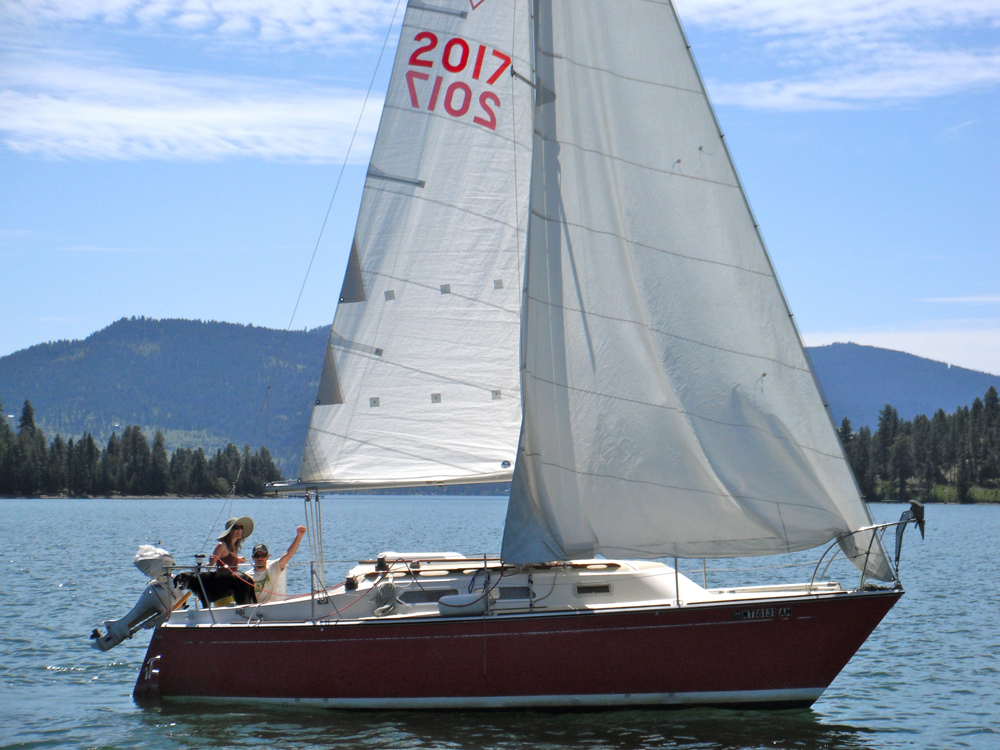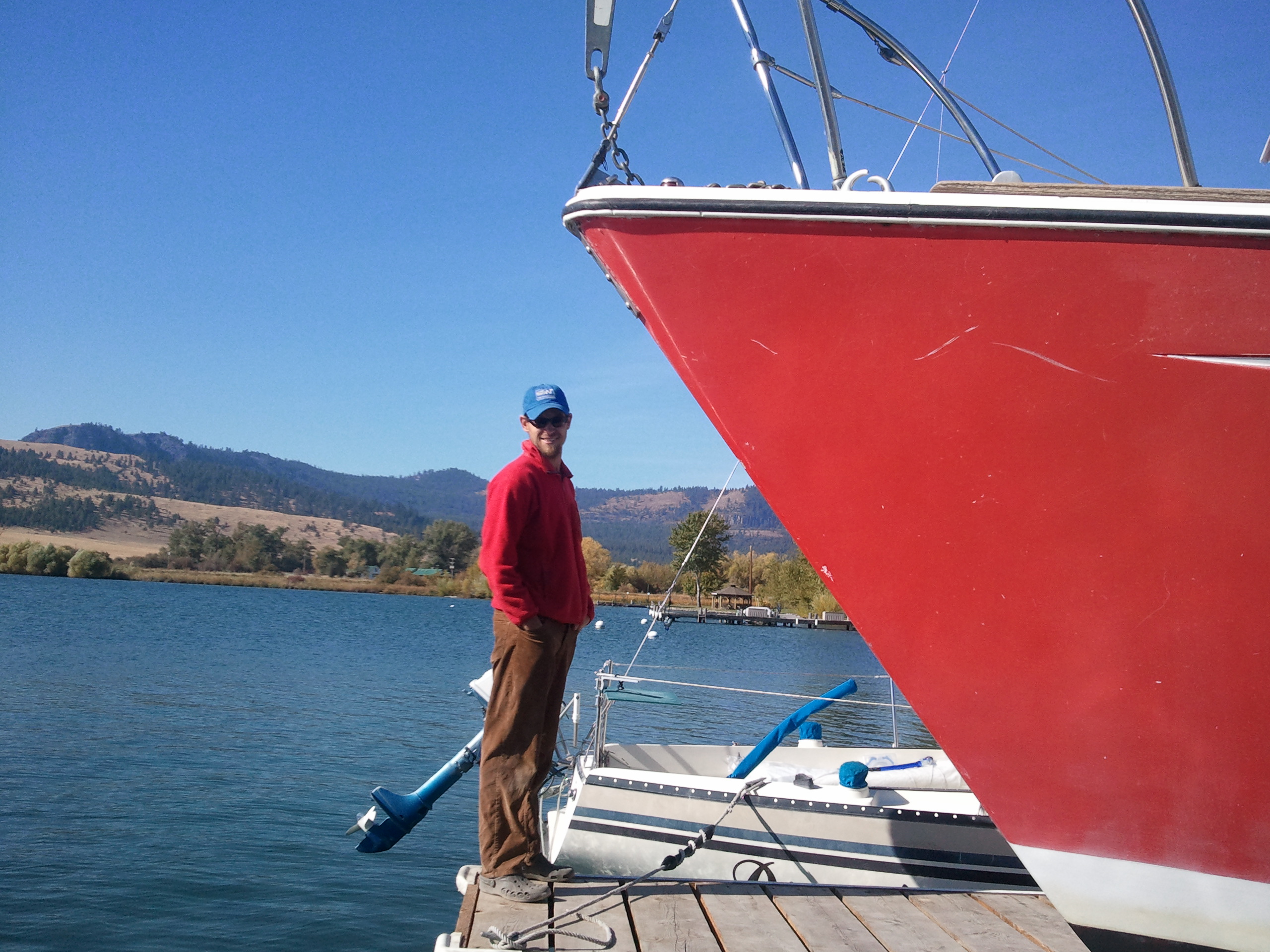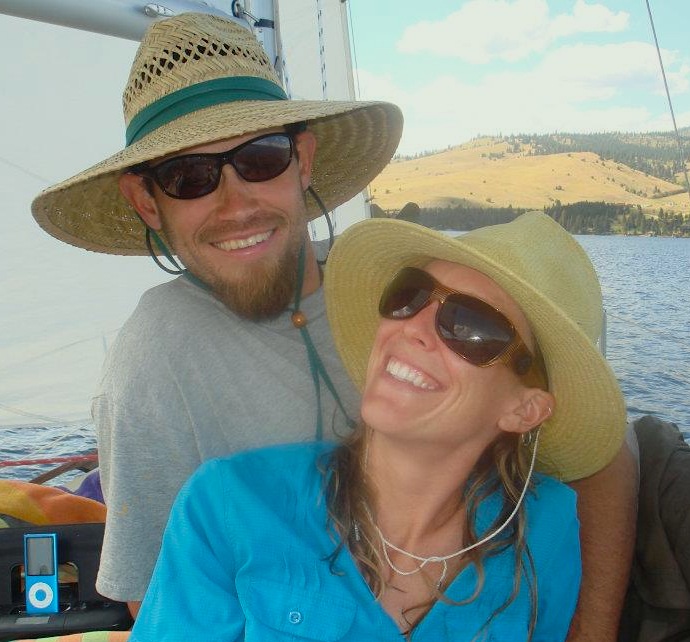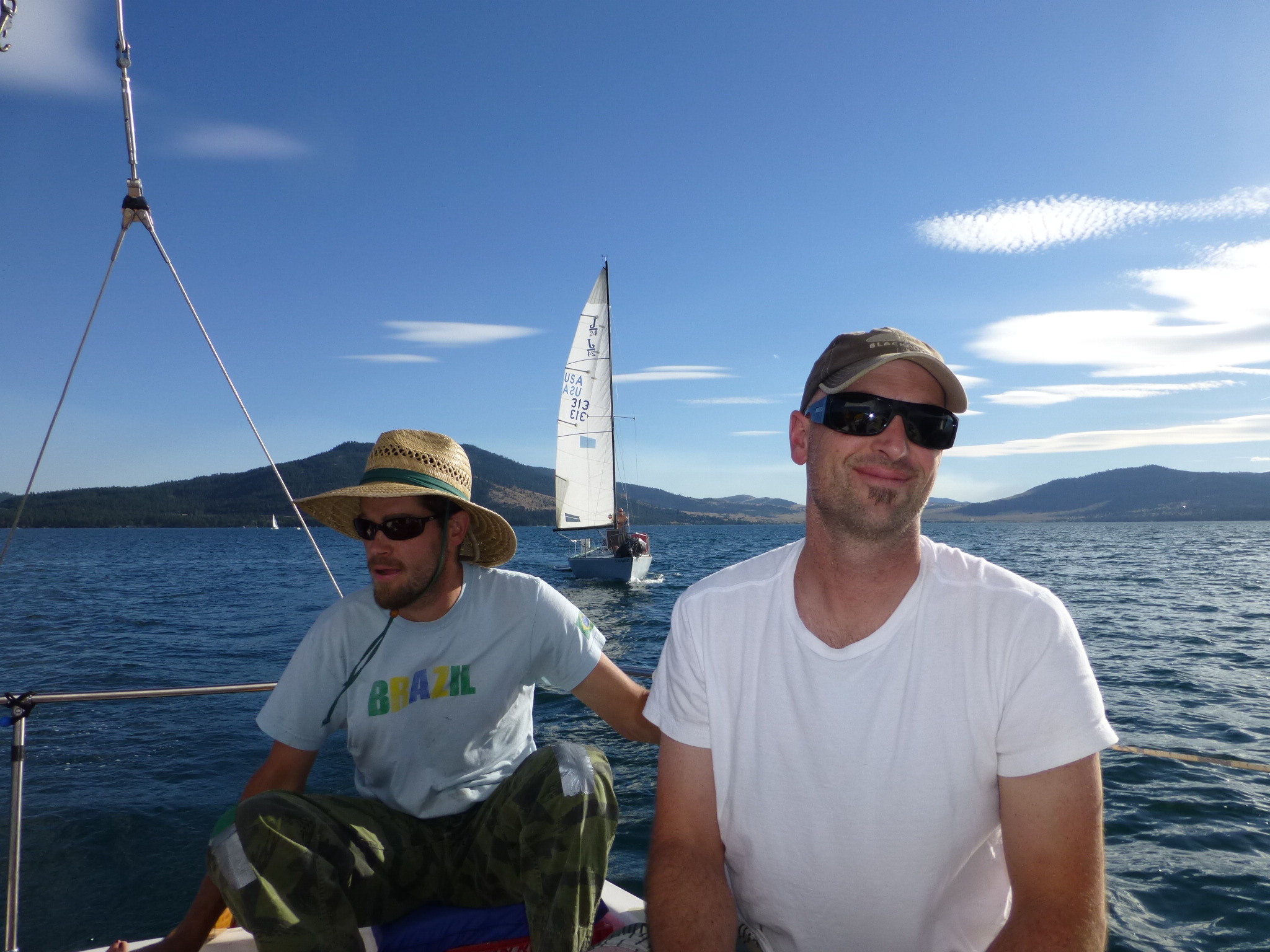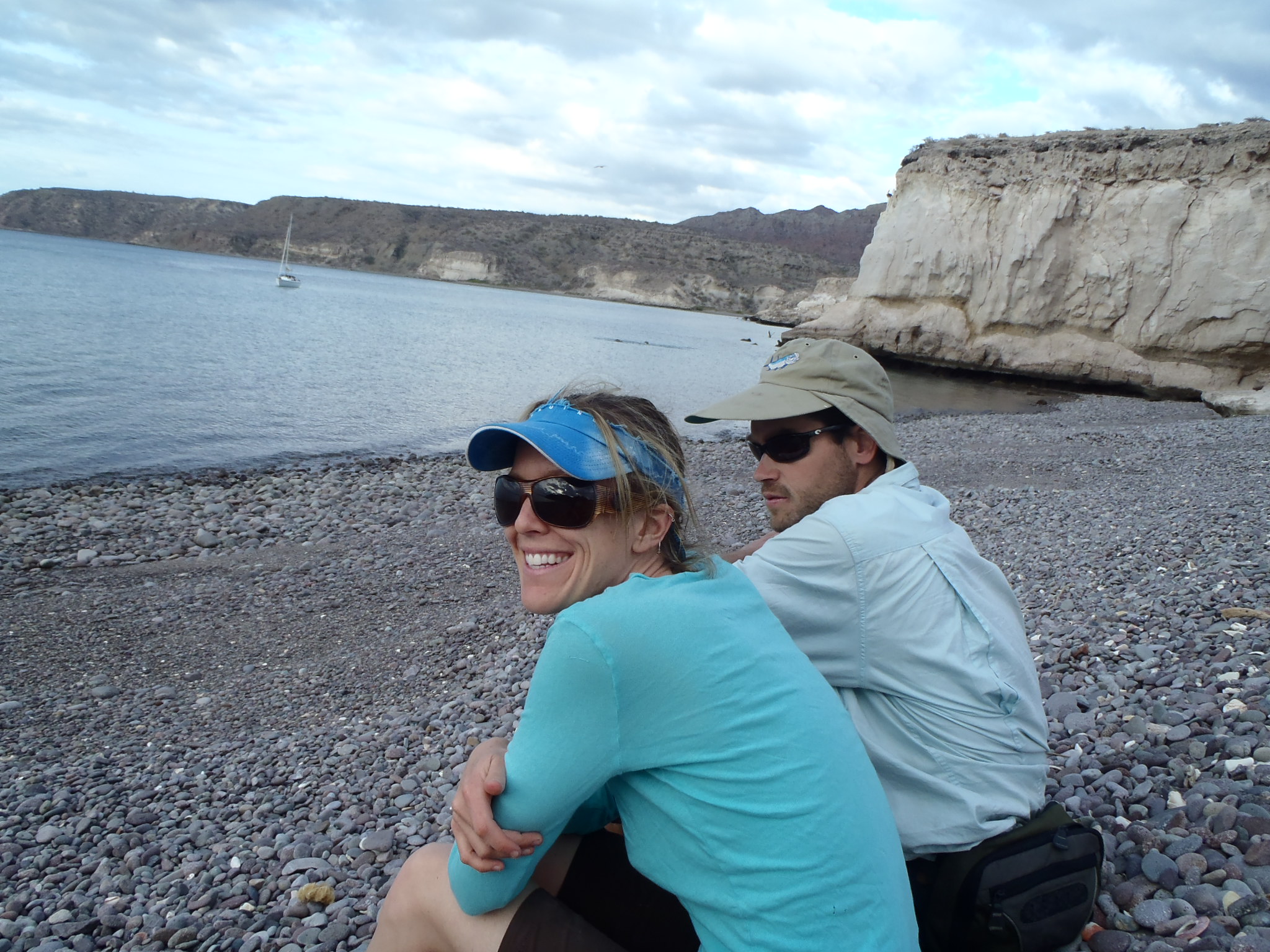A Letter to Llyr – From Bri
The following is a letter I emailed to the owners of Llyr. In April, this family will embark on an ocean expedition to research bio-cultural diversity from their 53′ steel sailboat. Llyr responded to our post in Cruisers Forum, and we’ve been communicating about potentially crewing on their boat from Panama to the Marquesas — a 30+ day crossing of the Pacific Ocean.
Read Rob’s letter to Llyr here.
Thanks so much for giving us this glimpse into your life, your goals, and your boat. It’s been a pleasure to read more about you and your family, and we certainly appreciate the time you’ve spent communicating with us. Since Rob’s done the majority of communication on our behalf, I thought I’d jump in with my background first.
 I was born in Southern California, and lived there until I was 22. My family lived at the base of the San Gorgonio Wilderness, just west of the desert near Palm Springs. My sister and I were lucky enough to grow up exploring tall mountains, fascinating deserts, and the Pacific Ocean. Some of my first memories are sleeping in the quarter-berth of my Grandpa’s Catalina while it was docked in Dana Point. My dad took care of this boat after Grandpa died, and they took us for weekend sailing getaways until the family had to sell the boat when I was 10. We continued our “sailing lessons” with Dad by renting small boats a couple times each summer, and I went on to take sailing lessons while at college in San Diego. I took all the courses I could, mainly so I was “certified” to check out different sailboats on weekends to tool around Mission Bay. Hobie Cats were my favorite.
I was born in Southern California, and lived there until I was 22. My family lived at the base of the San Gorgonio Wilderness, just west of the desert near Palm Springs. My sister and I were lucky enough to grow up exploring tall mountains, fascinating deserts, and the Pacific Ocean. Some of my first memories are sleeping in the quarter-berth of my Grandpa’s Catalina while it was docked in Dana Point. My dad took care of this boat after Grandpa died, and they took us for weekend sailing getaways until the family had to sell the boat when I was 10. We continued our “sailing lessons” with Dad by renting small boats a couple times each summer, and I went on to take sailing lessons while at college in San Diego. I took all the courses I could, mainly so I was “certified” to check out different sailboats on weekends to tool around Mission Bay. Hobie Cats were my favorite.
When I moved to Montana for grad school 10 years ago, I said a tearful goodbye to the Pacific and sailing…and then unexpectedly found a unique opportunity to sail even more in Montana! A friend asked me to caretake his boat and share docking costs on Flathead Lake, the largest freshwater lake west of the Mississippi. I’ve spent 6 seasons (May-Oct) exploring this 25×10 mile lake, gaining experience in safe anchoring off the many islands and in weathering rough mountain storms. This 1975 Paceship 26′ boat had no “amenities,” and I quickly learned the nuances of sail trim without a windex, anemometer, or GPS.
My favorite part about sailing on Flathead Lake is taking my friends out for the first time. We’ve probably introduced 30 people to their first sail over the years, and even inspired a few to take lessons and get their own boat! I love teaching others how to move through space with the power of wind alone, and watching them feel comfortable at the tiller after just a few hours. Rob was one of those I taught — and the quickest learner, with his background exploring water. We started dating during my third summer sailing, and truly fell in love on the boat. Since 2009, Rob and I would head up most Friday afternoons and cast off dock lines as soon as we could, spending 2-3 nights out on the lake, staring at Glacier National Park and the Mission Mountain Wilderness. His proficiency at fixing things on the boat (or anywhere, for that matter) and wanting to explore how things work on the boat mesh well with my contentment simply sailing her for hours.

I’ve wanted to cross the Pacific for as long as I can remember. Partly, this is because I distinctly remember”interviewing” my dad for a homework assignment in elementary school about the “event that most changed a parent’s life.” His was crossing from Hawaii to Santa Barbara when he delivered a boat (he worked in boatyards throughout So. Cal. in his early 20s). I can still recall exactly where I sat while he told me about pilot whales, storms, crystal-clear stars, and finding treasures while skin diving. I can hardly believe I might get the chance to have my own life-changing Pacific crossing in a few short months.
As for other sailing experience, my friend, Katie, and I chartered a bareboat out of the US BVIs in 2008. We sailed a Bavaria 38′ for 9 days, anchoring, mooring, and navigating between 6 islands. It was spirited weather, and we never took the reef out of the main. In 2007, I jumped aboard a 65′ Maxi racing boat in Airlie Beach, Australia, offering my crew and cooking services in return for a free 4-day sailing and snorkel trip around the Whitsunday Islands
I also crewed with a friend on his 30′ sailboat for 8 days and ~275 miles in Southeast Alaska in 2010. He asked for my help during the “Dixon Entrance”, which is one of the gnarliest crossings in the Inside Passage with no protection for the full force of Pacific waves and winds coming Northwest. It was fun. I learned a lot more about navigation on this Alaska voyage, since we had to rely on charts and GPS frequently due to dense fog. I also learned a lot more about how tides can impact navigation and velocity, as the huge tidal currents formed rips and whirlpools.
Lastly, Rob and I joined Katie and her husband, Mark, in Baja CA last November for a 2-week bareboat charter. We crammed 4 people in a 1970 22′ Catalina, along with enough food and water to explore deserted desert islands for 12 full days. We outfitted the boat ourselves with food for the 2 weeks, and were largely alone in the ocean, aside from a short stop in a tiny ~100-person village. Katie and Mark are now cruising in their own boat in Baja, and we plan to start our trip with them on their 28′ Pearson-Triton in late March before crossing the Pacific.
As for conservation and communication…well, those two words sum up my professional interests and experience in a nutshell! Writing is one of my passions, and one of my skills. Conservation is a principal ethos by which I live my life. I’m a biology major, and took several marine biology courses in San Diego as well as on Vancouver Island where I studied for 6 months. I also taught marine biology at an Audubon Camp in Maine for a summer before moving to Montana. My master’s in Environmental Writing has served me well these past 8+ years as I raise money, lobby, and lead the outreach/ communications around freshwater conservation in western Montana. I taught myself how to build a website this fall, and have enjoyed learning more about the many opportunities to reach a broader audience with diverse types of media. I’m looking forward to writing and creating more during our “mid-life retirement.”
 I’m great at scrubbing decks or dishes. I like oiling teak. I love cooking, and especially the challenge of cooking a great meal with limited ingredients. I got my scuba open water certification in Montana (brrrr!), and have dived in Florida, Cuba, and Mexico. I play guitar, sing, practice yoga and all types of dance, and — always, always — look for ways to learn more about the world around us.
I’m great at scrubbing decks or dishes. I like oiling teak. I love cooking, and especially the challenge of cooking a great meal with limited ingredients. I got my scuba open water certification in Montana (brrrr!), and have dived in Florida, Cuba, and Mexico. I play guitar, sing, practice yoga and all types of dance, and — always, always — look for ways to learn more about the world around us.
I think your family, your boat, and your goals sound amazing. And, I think that Rob and I would fit in well, from what we understand so far. Thank you again for the chance to introduce ourselves. I look forward to talking more, and hopefully meeting in person, too.

